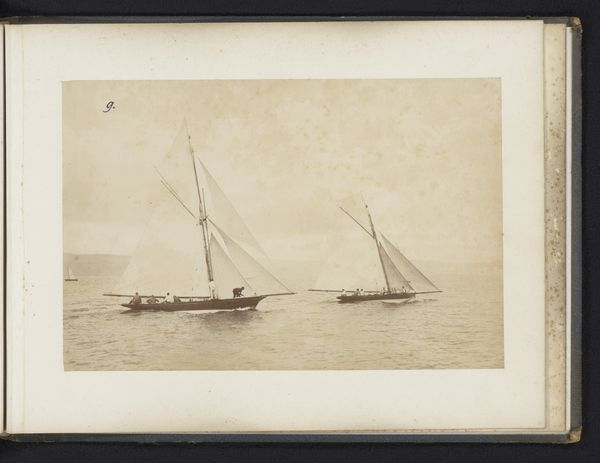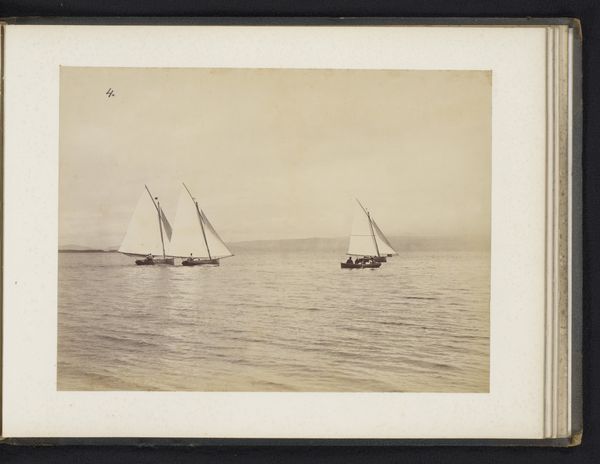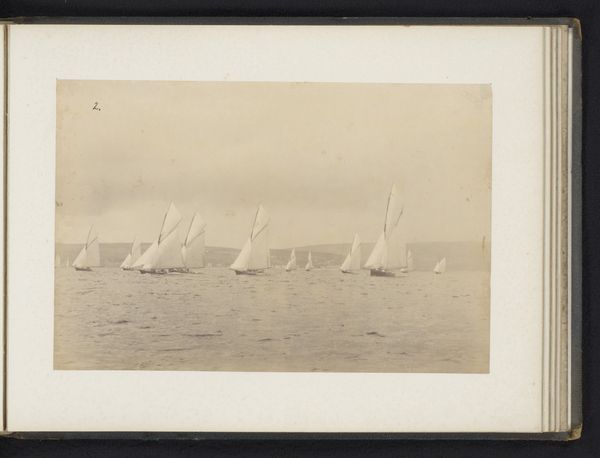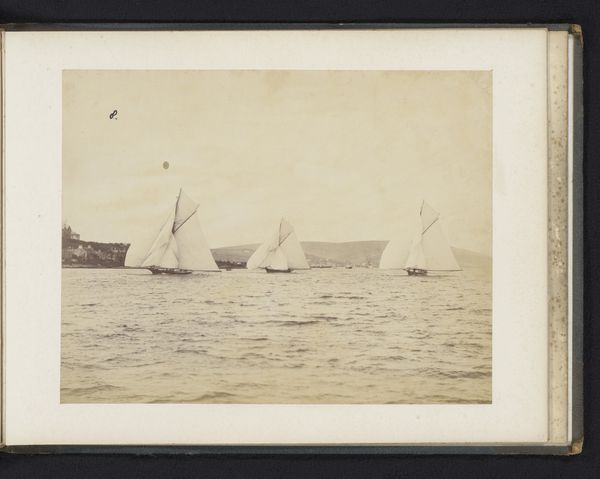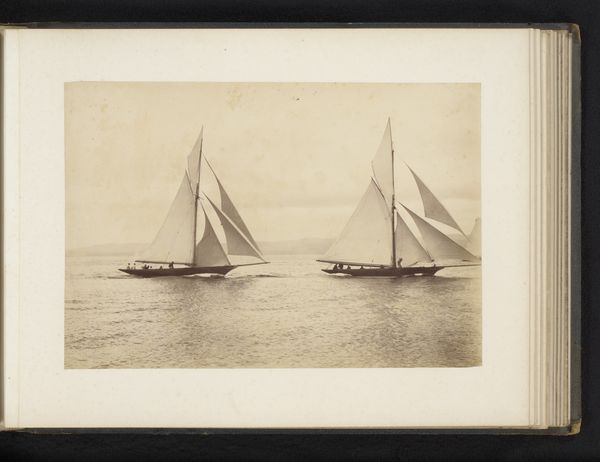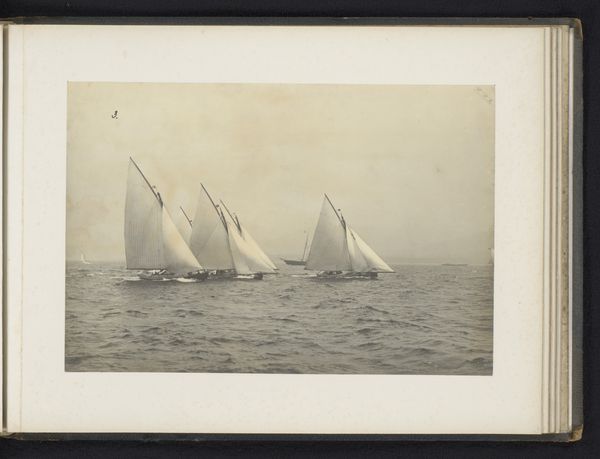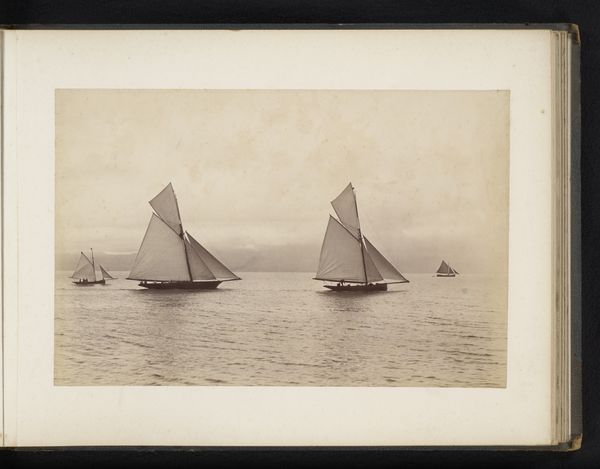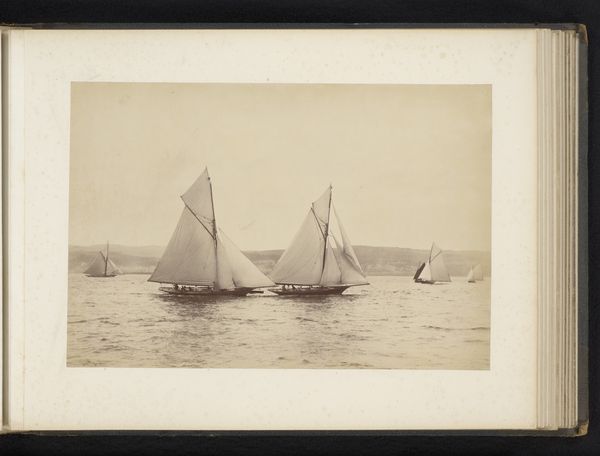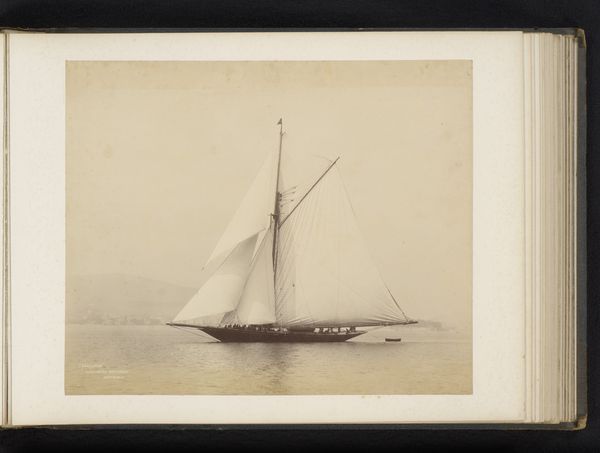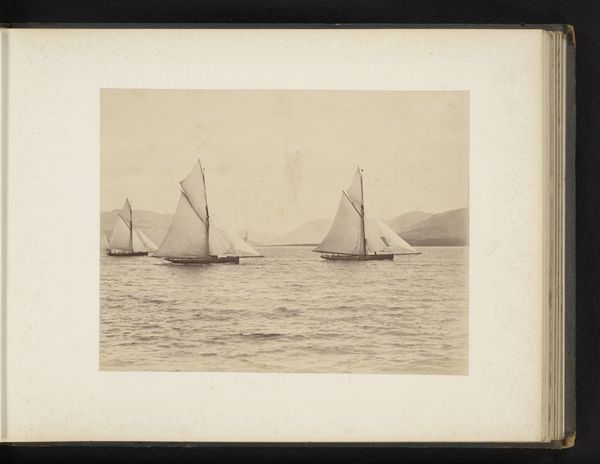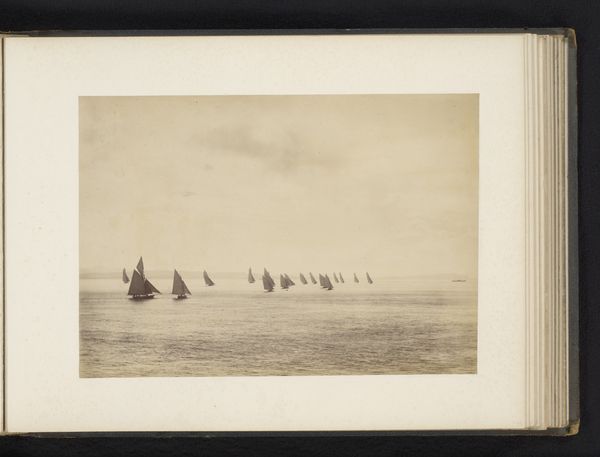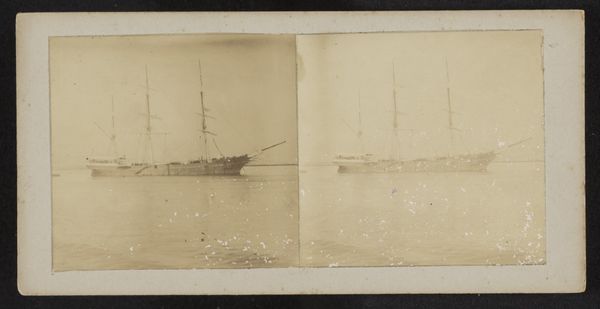
photography, gelatin-silver-print
#
landscape
#
photography
#
gelatin-silver-print
#
realism
Dimensions: height 187 mm, width 289 mm
Copyright: Rijks Museum: Open Domain
Editor: Here we have "Zeilschepen de Dora en Yvonne te water," a gelatin silver print from around 1880 to 1900 by James Adamson. I'm struck by the contrast between the crisp detail of the sailboats and the somewhat blurry, almost dreamlike quality of the sky. What do you see in this photograph? Curator: I see a fascinating intersection of class, technology, and leisure. These aren't just boats; they represent a specific moment in history when sailing was becoming increasingly recreational for the wealthy. Think about the social implications: who owned these boats? Who worked on them? What stories of labour and privilege are hidden beneath those sails? Editor: That's a really interesting way to look at it. I was mostly focused on the technical aspects of the photo itself. How the artist captured the light on the water. Curator: But the "how" is inextricably linked to the "why" and the "for whom." Photography itself was a relatively new technology. Who had access to it? Documenting leisure activities like yachting reinforced existing social hierarchies and ideas around capitalist success and aspiration. Can you think of contemporary parallels? Editor: So you're saying that even a seemingly simple image of sailboats can be a commentary on society? Curator: Precisely. It invites us to examine the power dynamics at play and consider the image within its historical and cultural framework, particularly around wealth and recreation. Editor: I guess I hadn't considered how much a picture like this could reflect broader social issues. I’ll definitely keep that in mind. Curator: It's about interrogating the image, pushing beyond the surface to understand its deeper cultural significance. And hopefully thinking about images today with the same critical lens.
Comments
No comments
Be the first to comment and join the conversation on the ultimate creative platform.
